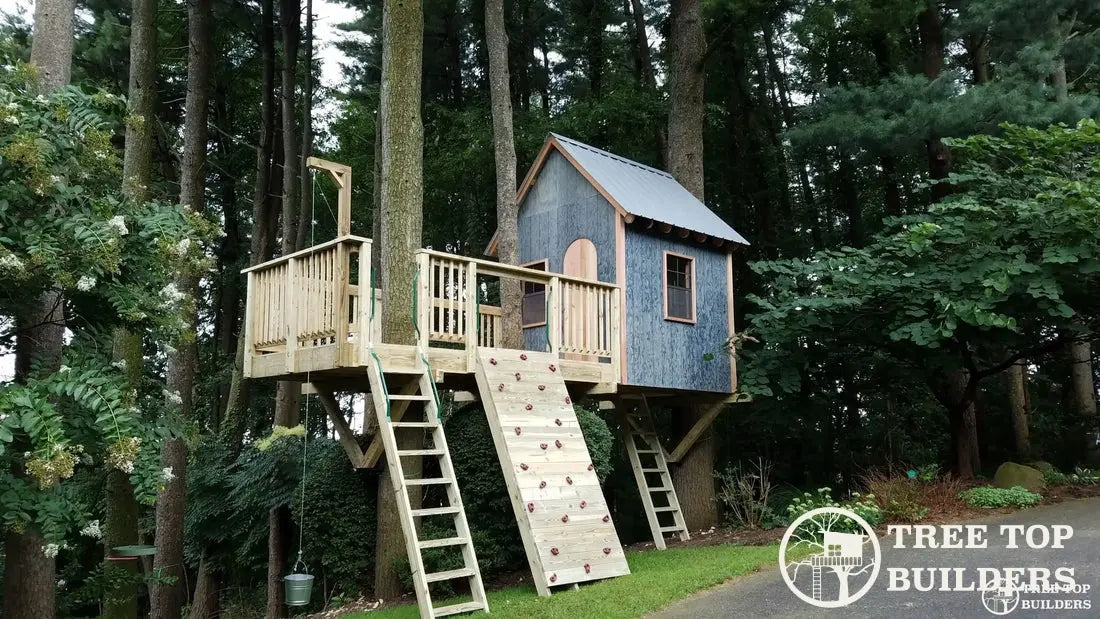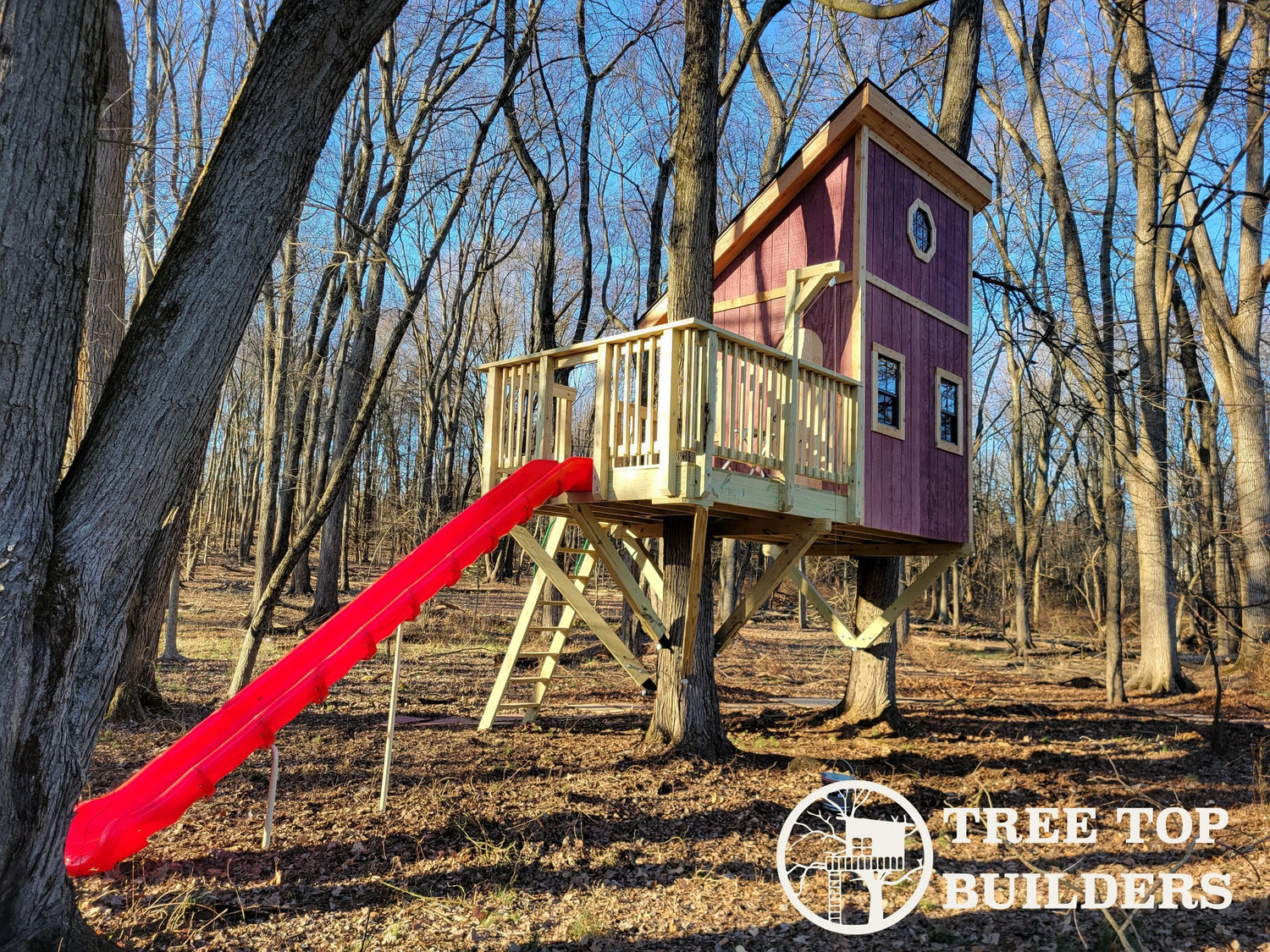
How "NOT" to Build a Tree House
Top 10 Tree House Building Mistakes
1. Choosing a tree without consulting an expert
Building a tree house starts with a foundation analysis. What species is the tree? Where is the tree in its natural life cycle? Is the tree healthy - free of defects, decay, disease? You may not need a professional tree house builder or arborist to look at the tree if you know the basics or research your tree online. But first consider the level of investment you are making in the tree house before bypassing this step to save a few hundred bucks. How much time and money will you spend on the tree house? What is the intrinsic value of your tree? Every ground house starts with the footer inspection and then concrete, and every tree house starts with the tree’s structural grounding, core integrity, and health.
2. Neglecting to have even a reasonably basic tree house plan
It can be fun to build your tree house one board at a time. It certainly gets you started sooner. But this causes a few common mistakes. When there are multiple branches or trunks, your eye-balling methods may deceive you. You may find that in order to pass a main tree house beam where you thought you could, you have to cut a major branch (bad idea). Secondly, most people have trouble sighting level, especially when the grade is sloped. Note that a tree house platform constructed perfectly level will not necessarily be parallel with the ground. This matters because you may find that what you thought was a 10-11' span may actually be 13', which would require a stiffer beam and more support. So it’s back to the lumber store to return the 12' joists and get some 16's, and now you need 2x10s instead of 2x8s, increasing the weight, cost, and difficulty of the tree house unexpectedly. Even if you can sight level and your beams and spans work out, you may still end up trying to improvise extra tree house attachment points on the fly, which may lead to less than optimal decisions for the tree house and/or the tree. Our advice: climb the tree, take measurements, temporarily mark each beam, draw the tree house platform on paper, and do whatever else it takes to reduce the surprises once you start building.
3. Using too small or the wrong fasteners
Don’t assume that the biggest lag bolt on the shelf at your local big box home improvement retailer is suitable for holding up your tree house. Even a kids tree house with walls, windows, and a roof, will probably use a couple thousand pounds of materials. And then you need to allow for the tree house to also support live loads to cover as many people as can fit up there. It always pays to use the right fastener. Use screws or carraige bolts for places where the tree house will primarily be subject to pullout or tension forces. Use nails where shear forces are primary. Be careful to use approved fasteners for treated lumber. Beware that most of these mistakes will not cause tree house failure in the short term, so you might not necessarily know you made a mistake right away.
4. Using too many fasteners
Never place tree house fasteners too close together in the tree. Remember that trees don’t heal, they seal, or compartmentalize around each wound. If wounds are too close together, the tree may treat them as one wound, which will cause the wood between the fasteners to decay. This will almost certainly cause the tree house to fail. A better approach: Use one, large tree house fastener, instead of multiple smaller ones. I know it’s tempting to use the smaller ones because that’s what you can buy on the shelf, but don’t be lazy with tree house safety.
5. Pinning a beam to a tree
When a tree house beam is pinned to the tree, one of two bad things WILL happen: 1) the beam will restrict growth on that side of the tree, causing it to suffer, or 2) the tree will continue to grow, pushing the beam outward and right off the bolts it was secured with! Eventually, it will fall off and the tree house will fall down. It is advisable to “perch” the beam on a super strong professional tree house fastener like an artificial limb, rather than pinning a beam to the tree.
6. Inadequate stabilization of the platform
The tree house platform should be stable because any movement will wear parts loose over time and become more dangerous. We usually see problems with knee braces not being installed tightly to reduce movement. If the tree house fasteners themselves are moving, you have a big problem because the tree will never seal that wound properly. You will likely see liquid coming from the spot, the wound will remain open, the tree will suffer, and the fastener will get looser and looser and probably fall out.
7. Girdling the tree with rope, cable, or 2x4s
Don’t wrap anything around the tree to support the tree house. You can completely kill the limb or trunk if you do. Even if the tree survives, it will certainly suffer. We see this a lot on zip lines, and when cables or chains are used for tree house supports. We have also seen many people nail short 2x4s into the trunk to space the chains or cables 1.5" away from the branch or trunk. That will lessen girdling, but it breaks rules #4 and #5. Get the right tree house fasteners to keep your tree happy.
8. Not leaving room for the tree to grow - boxing around
The tree house should only touch the tree where necessary. This means when you frame your beams, joists, rafters, etc., that they all need to allow the tree sufficient room to grow over time and sway in the breeze without rubbing the tree house. If you don’t do this, you risk girdling the tree and reducing the life of your tree house. If you later decide to extend the life of the tree house, your maintenance will be harder, so plan for growth. Ask an expert how fast your tree will grow.
9. Nailing ladder rungs onto the tree trunk
You may have seen a picture of 2x4 ladder rungs each nailed into a tree for tree house access. That is not nice to the tree. As a general rule, no part of the tree house should touch the tree unless it has too. There are many other ways to build a ladder or access the tree house. These types of ladders are repeat offenders for breaking rule #4.
10. Not bothering to preserve natural wood surfaces
Wood, whether pressure treated, cedar, or even bald-cypress has a clock. The sun, rain and snow will cause them to decay and the tree house will look older faster, and need replacement sooner. Commercially produced lumber does not last as long as the old growth forests. Profit drives companies to grow timbers faster, so they don’t build their natural resistance to decay and pests. If your tree house is built with reclaimed lumber, this might not apply, however, treatment will extend the life and beauty of any wood. At a minimum, protect your tree house by applying a clear sealant on the exterior floors, stairs, and railings every 1-3 years.



